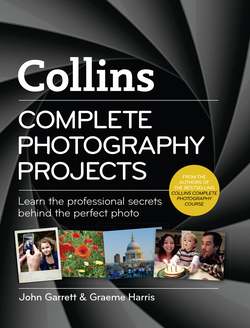Читать книгу Collins Complete Photography Projects - John Garrett - Страница 52
PROJECT 6: SEASONAL LANDSCAPES
ОглавлениеIn most parts of the world the countryside looks very different in each of the four seasons, bringing a range of light, weather and landscape possibilities.
We feel that dividing our landscape projects into summer, autumn, winter and spring helps to focus the mind when we’re trying to decide where to travel and what to photograph next. We may choose to go for the pretty pictures in spring, the high-contrast light and warm colours in summer, the spectacular leaf colours in autumn and the stark storminess in winter, for example. You will learn a lot about landscape photography by following the seasons.
This assignment is a long-term project; we want you to make four landscape pictures, each one in a different season. In each picture, it should be obvious which season you are depicting. Landscapes make great images to put on your wall and there are many online companies that will make good-quality large prints at a very reasonable price. You could also make a calendar of images from your seasonal landscape project – again something that can be done inexpensively online.
MIDDAY IN SUMMER
I cropped this photograph to a panoramic shape, which suits the long, wide landscape. There was marvellous bright summer light at midday; it’s often said that each end of the day has the best light, but it depends on the day and you will often find that while there are no interesting cast shadows from trees and so on when the sun is overhead, clouds will provide shadows on the landscape to contrast with the bright highlights. I set the camera on a tripod, composed the picture and waited for a beautiful cloud formation and for the sun to strike the yellow field. I darkened the foreground with the Burn tool to emphasize that yellow. 1/1000 second at f11, 48mm, 200 ISO. GH
BIRDS IN WINTER
This very simple winter landscape is a favourite of mine. It has a very melancholy mood with little saturation, unusual in these days of poster-colour pictures. The flock of birds flying across the highlight adds that special touch. It’s a picture that demonstrates that you don’t need striking colours and imposing features to make a successful landscape photograph. 1/350 second at f8, 85mm, 400 ISO. GH
WINTER IN THE HIGHLANDS
The Scottish Highlands are one of the great places for landscape photograph enthusiasts. This winter sunrise is in Glen Coe. The sun has lit the cloud spiral and backlit the foreground snow. I shot this on a Hasselblad medium format camera with a wide-angle lens, using black and white film. Putting a red filter over the lens to darken the blue sky works well in snow scenes, and I did that here. Because the colour blue is associated with cold, I scanned the negative and added the wintery blue tone in Photoshop with the Colorize button in Hue/Saturation. 1/250 second at f8, 40mm, ISO 400 film. JG
SPRING IN SCOTLAND
All the elements that a landscape photograph is supposed to include are present in this shot of Scotland in spring. The eye enters along the road, there is a middle ground of rolling hills lit by late afternoon light and the white farmhouse provides the focal point. I used a long lens to isolate this landscape out of the huge view in front of me and also to compress the perspective, bringing the mountains and farmhouse closer to the foreground than they were in reality. It’s not dramatic but it’s pretty, in the classic calendar style. I used a neutral density graduated filter to darken the sky and mountains. Later I saturated the colour a bit in Photoshop and also lightened the farmhouse to make it more prominent. 1/500 second at f11, 130mm, 400 ISO. JG
AUTUMN IN PENNSYLVANIA
In this simple autumnal picture of Pennsylvania the colours glowed in the late afternoon light. However, when we checked it out on the computer we saw a bare patch in the centre of the middle tree and the colour didn’t have quite the saturation that my eye had seen – so we decided to enhance it. JG
AUTUMN IN PENNSYLVANIA ENHANCED
To fill up the gap, we cloned some clumps of leaves from the tree on the right. We brightened the picture and increased the contrast, then added more saturation. We darkened some of the bright tree trunks with the Burn tool and finally, using the Dodge tool, lightened the leaves on the middle tree to make it the focal point of the picture. Sometimes the camera doesn’t do the scene justice and you’ll want to do some digital retouching to give the picture a final boost. 1/400 second at f8, 95mm, 400 ISO. JG
